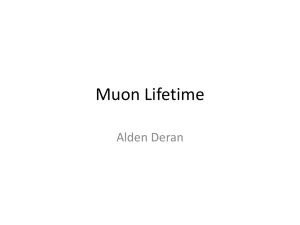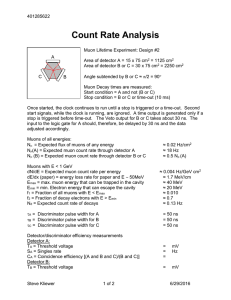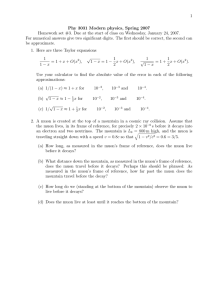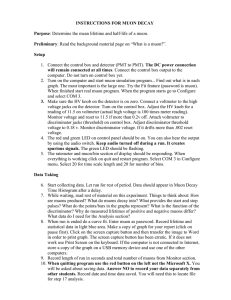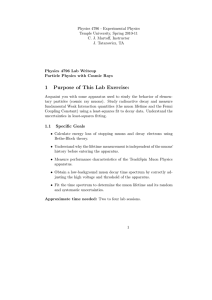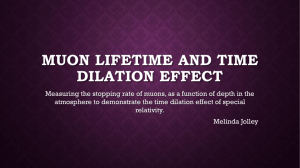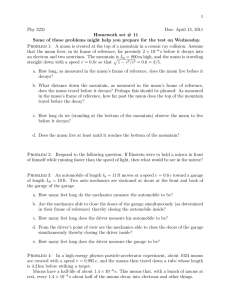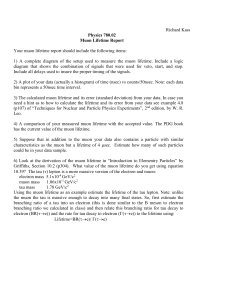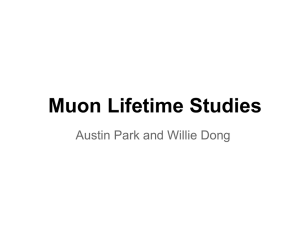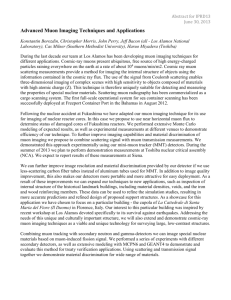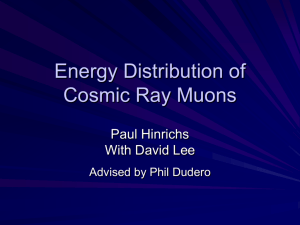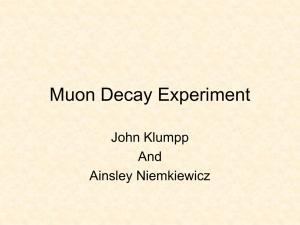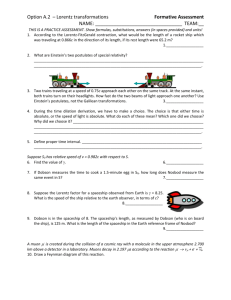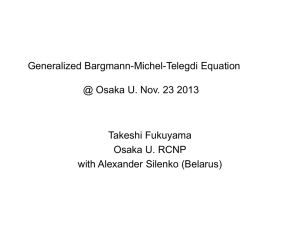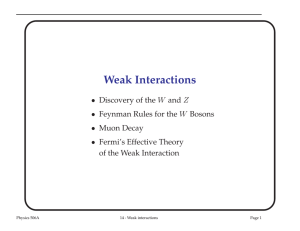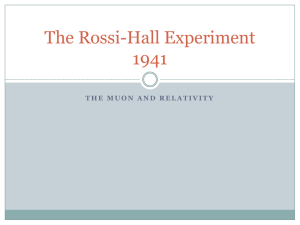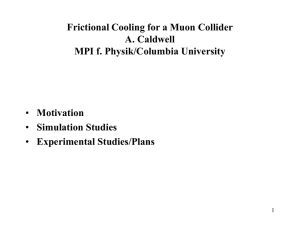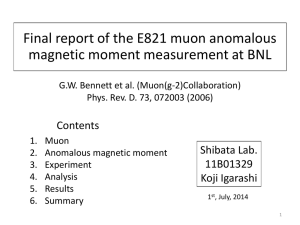Muon Speed/Lifetime Study
advertisement
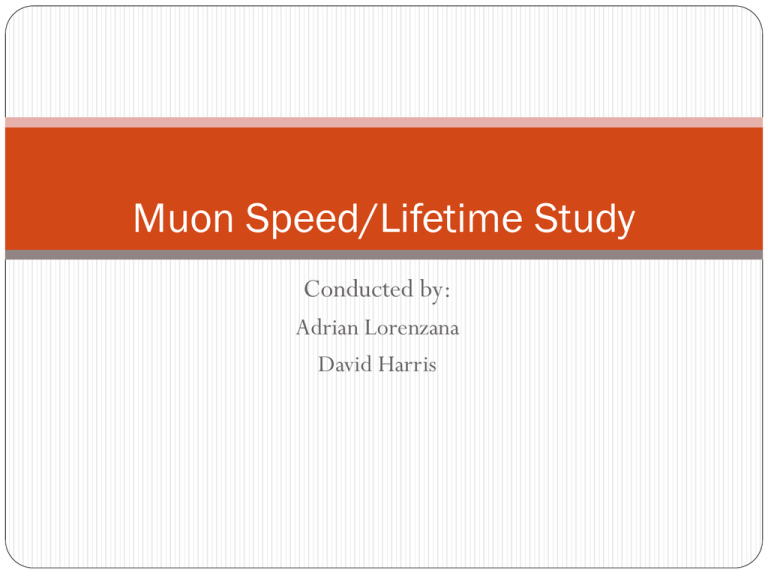
Muon Speed/Lifetime Study Conducted by: Adrian Lorenzana David Harris Introduction Tasked to study Cosmic Rays Cosmic Rays are charged particles that collide with matter in the atmosphere and send down a shower of smaller subatomic particles, some of which are muons Set out to verify previous calculations of Muon speed and rate of decay as a way of witnessing relativity and time dilation Lifetime Procedure Stacked four detectors vertically with about .25m space in between Collect lots of data on single fold coincidence Analyze the data using e-Lab for muons that decayed within the detector, program generates a graph Lifetime Study Results Found a lifetime of 2.3 microseconds, with an error of ±0.3 microseconds Very close to the accepted muon lifetime of 2.2 microseconds So far, the study submitted to e-Lab with the best results, and possibly the only one with correct results Muon Speed Study Procedure Spaced four detectors identically to the lifetime study, in a stacked formation Set detector to record all events with four-fold coincidence to best ensure a muon event Analyzed data with Excel to find the time the muon triggered the first and fourth detector Find rate using distance over time Muon Speed Data Analysis Using e-Lab, we ran a shower study on the data, which generated a text file Muon Speed Data Analysis 700 Muon Speed Data Analysis 600 500 Frequency 400 300 200 100 0 1.2 1.3 2.4 2.5 3.7 3.8 4.9 5 6.2 6.3 7.4 7.5 8.7 8.8 Nanoseconds 9.9 10 11.2 11.3 12.4 12.5 13.7 13.8 14.9 15 Muon Speed Study Results We found an average speed of 154268417.1 meters per second, about 51.4% the speed of light, mode of 122666666.7, about 40.9% speed of light A muon traveling that speed cannot make the journey from space to detector, as it would decay before arrival. The muon would decay after 2.56 microseconds (when traveling at the highest speed we found, 154268417.1 m/s, compared to the original 2.197). Muon Speed Study Results cont. Muon traveling at this speed from 15 kilometers above the earth would only make it 395.12 meters Conceivable that the muon traveled at near light speed until reaching the building, then slowed down when it passed through matter Results are actually consistent with other studies posted on eLab Muon Speed Further Discussion To verify our source of error, an experiment detecting muons outdoors would have to be run

